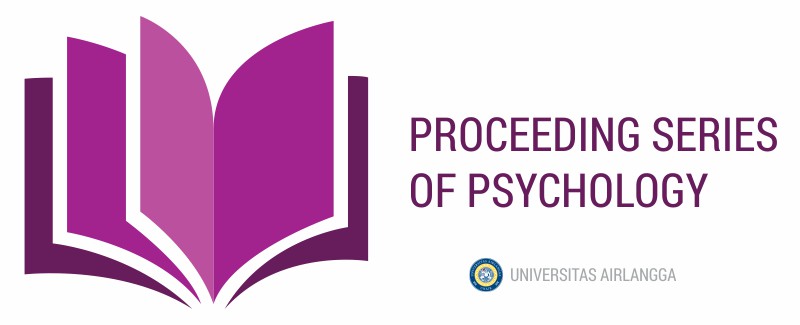Digital Self-harm pada Remaja: Tinjauan Naratif
Kata Kunci:
digital self-harm, mental health literacy, self-cyberbullying, self-harmAbstrak
Digital self-harm adalah perilaku mengunggah, mengirim, atau membagikan konten negatif terkait diri sendiri. Perilaku ini berhubungan erat dengan physical self-harm. Motivasi yang melibatkan perilaku ini antara lain adalah self-hatred, gejala depresi, serta attention-seeking. Penelitian ini ditujukan untuk memperdalam pembahasan mengenai topik digital self-harm dan mengetahui kesamaannya terhadap self-harm yang dapat dikaitkan dengan literasi kesehatan mental. Penelitian in merupakan studi literatur yang menghasilkan 9 jurnal artikel sesuai kriteria dari 51 total ditemukan. Hasil menunjukkan bahwa terdapat beberapa kesamaan dampak yang ditimbulkan oleh digital self-harm seperti halnya self-harm pada umumnya. Penting juga untuk mengaitkan perilaku ini terhadap literasi kesehatan mental sebagai langkah pencegahan dan penanganan perilaku digital self-harm. Hasil penelitian dapat menunjang penelitian selanjutnya terhadap topik terkait dan dapat dimanfaatkan untuk kepentingan akademis maupun praktis.
Referensi
Aguirre Velasco A., Cruz, I. S. S., Billings, J., Jimenez, M., & Rowe, S. (2020). What are the barriers, facilitators and interventions targeting help-seeking behaviours for common mental health problems in adolescents? A systematic review. BMC Psychiatry, 20(1). https://doi.org/10.1186/s12888-020-02659-0
Brennan, C., Saraiva, S., Mitchell, E., Melia, R., Campbell, L., King, N., & House, A. (2022). Self-harm and suicidal content online, harmful or helpful? A systematic review of the recent evidence. Journal of Public Mental Health, 21(1), 57–69. https://doi.org/10.1108/JPMH-09-2021-0118
Erreygers, S., Symons, M., Vandebosch, H., & Pabian, S. (2022). Fictitious online victimization: Exploration and creation of a measurement instrument. New Media and Society, 24(1), 156–177. https://doi.org/10.1177/1461444820960079
Griffin, K., Twynstra, J., Gilliland, J. A., & Seabrook, J. A. (2023). Correlates of self-harm in university students: A cross-sectional study. Journal of American College Health, 71(3), 959–966. https://doi.org/10.1080/07448481.2021.1909049
Hall, S., & Melia, Y. (2023). What is known about the role of friendship in adolescent self-harm? A review and thematic synthesis. Child & Youth Care Forum, 52(2), 285-310. https://doi.org/10.1007/s10566-022-09686-w
Jorm, A. F., Korten, A. E., Jacomb, P. A., Christensen, H., Rodgers, B., & Pollitt, P. (1997). “Mental health literacy”: A survey of the public’s ability to recognise mental disorders and their beliefs about the effectiveness of treatment. Medical Journal of Australia, 166(4), 182–186. https://doi.org/10.5694/j.1326-5377.1997.tb140071.x
Kaligis, F., Ismail, R. I., Wiguna, T., Prasetyo, S., Indriatmi, W., Gunardi, H., Pandia, V., & Magdalena, C. C. (2021). Mental health problems and needs among transitional-age youth in Indonesia. International Journal of Environmental Research and Public Health, 18(8), 4046. https://doi.org/10.3390/ijerph18084046
Kemp, S. (2022, Februari). datareportal.com. [online]. Diakses pada 17 Maret 2022 dari https://datareportal.com/reports/digital-2022-indonesia
Lydecker, J. A., Grilo, C. M., Hamilton, A., & Barnes, R. D. (2022). Digital self-harm is associated with disordered eating behaviors in adults. Eating and Weight Disorders, 27(6), 2129-2136. https://doi.org/10.1007/s40519-021-01355-6
Meldrum, R. C., Patchin, J. W., Young, J. T. N., & Hinduja, S. (2020). Bullying Victimization, Negative Emotions, and Digital Self-Harm: Testing a Theoretical Model of Indirect Effects. Deviant Behavior, 43(3), 303–321. https://doi.org/10.1080/01639625.2020.1833380
Pacheco, E., Melhuish, N., & Fiske, J. (2019). Digital self-harm: Prevalence, motivations and outcomes for teens who cyberbully themselves. In SSRN Electronic Journal. https://doi.org/10.2139/ssrn.3374725
Patchin, J. W., & Hinduja, S. (2017). Digital Self-Harm Among Adolescents. Journal of Adolescent Health, 61(6), 761–766. https://doi.org/10.1016/j.jadohealth.2017.06.012
Pater, J. A., Nova, F. F., Coupe, A., Reining, L. E., Kerrigan, C., Toscos, T., & Mynatt, E. D. (2021). Charting the unknown: Challenges in the clinical assessment of patients’ technology use related to eating disorders. Proceedings of the 2021 CHI Conference on Human Factors in Computing Systems, 1-14. https://doi.org/10.1145/3411764.3445289
Pater, J., & Mynatt, E. (2017). Defining Digital Self-Harm. Proceedings of the 2017 ACM Conference on Computer Supported Cooperative Work and Social Computing, 1501–1513. https://doi.org/10.1145/2998181.2998224
Saraf, G., Chandra, P. S., Desa, G., & Rao, G. N. (2018). What adolescent girsl know about mental health: Findings from a Mental Health Literacy Survey from an urban slum setting in India. Indian Journal of Psychological Medicine, 40(5), 433–439. https://doi.org/10.4103/IJPSYM.IJPSYM_108_18
Semenza, D. C., Meldrum, R. C., Testa, A., & Jackson, D. B. (2021). Sleep duration, depressive symptoms, and digital self-harm among adolescents. Child and Adolescent Mental Health, 27(2), 103–110. https://doi.org/10.1111/camh.12457
Sibarani, D. M., Niman, S., & Widiantoro, F. (2021). Self-Harm Dan Depresi Pada Dewasa Muda. Jurnal Keperawatan Jiwa, 9(4), 795–802.
Soengkoeng, R., & Moustafa, A. A. (2022). Digital self-harm: an examination of the current literature with recommendations for future research. Discover Psychology, 2(1). https://doi.org/10.1007/s44202-022-00032-8
Troya, M. I., Babatunde, O., Polidano, K., Bartlam, B., McCloskey, E., Dikomitis, L., Chew-Graham, & A., C. (2019). Self-harm in older adults: Systematic review. British Journal of Psychiatry, 214(4), 186–200. https://doi.org/10.1192/bjp.2019.11
Yanti, U. R. D., & Hermaleni, T. (2020). Review Literatur : Kontribusi Self Esteem terhadap Subjective Well- Being pada Remaja Etnis Minang. Jurnal Pendidikan Tambusai, 4(3), 2723–2730.
Unduhan
Diterbitkan
Terbitan
Bagian
Lisensi
Hak Cipta (c) 2023 Ganis Alviani Yubastian, Atika Dian Ariana

Artikel ini berlisensiCreative Commons Attribution-ShareAlike 4.0 International License.


